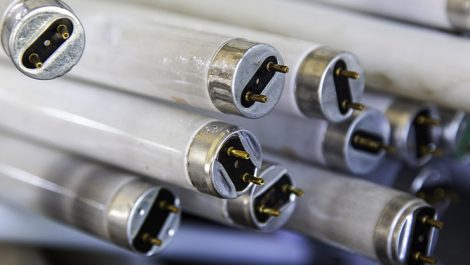It’s got a long and clumsy title, but what ISO 21632 (Graphic
technology – Determination of the energy consumption of digital
printing devices including transitional and related modes) can do
for the graphics industry has nothing to do with clumsiness. Far
from it. This document will help make short run digital printing
devices, including large format machines, much more environmentally
accountable.
ISO 21632 is due for imminent publication, and has much in
common with ISO 20690 (Graphic technology – Determination of the
operating power consumption of digital printing devices) published
earlier this year. The two documents are intended to achieve the
same goals, however they are tailored for very different
situations. ISO 20690 provides a standard reference for calculating
energy consumption as the press is running, based on the
kilowatt-hours required to digitally print 1000 A4 sheets.
ISO 21632 is a standard reference for digital production
printing devices used for relatively short run lengths, and which
use relatively high amounts of transitional energy, including surge
power. These operating transitions can make a substantial
difference to the overall energy profile and are not taken into
account in ISO 20690.
The basic difference between the two documents is that one is
more suitable for digital presses used to produce long runs without
multiple operational transitions. The other, ISO 21632, is designed
for digital presses used to produce on demand applications such as
photobooks, sign and display work and other types of print produced
in short runs. The standards distinguish between devices that have
one print mode, say production or best quality and devices that in
addition have multiple modes such as sleep and print ready.
These documents are both important because they provide the
tools that allow us to do complete Life Cycle Analysis (LCA) on
digital printing devices. LCA is necessary to make digital presses
environmentally accountable, and allows printers, press
manufacturers and print buyers a means to assess the overall
environmental impact of their print related activities.
Whether that matters, given the environmental apathy that seems
to infect the graphics industry, depends on where you sit in the
supply chain. The best we can hope for is that machine
manufacturers, print buyers, printing companies and industry
associations take a leadership position on this industry’s
environmental impact. The worse case is that print continues to
lose out to electronic media, despite their lack of sustainability
credentials and inability to support the circular economy.
Arguments and tools for supporting print’s environmental
sustainability are increasingly abundant. But unless they are used
to make a constructive case for the graphics industry’s
sustainability, the slope might be more slippery than we
thought.
– Laurel Brunner
This article was produced by the Verdigris Project, an
industry initiative intended to raise awareness of print’s positive
environmental impact. This weekly commentary helps printing
companies keep up to date with environmental standards, and how
environmentally friendly business management can help improve their
bottom lines. Verdigris is supported by the following
companies: Agfa Graphics, EFI, Fespa, HP, Kodak, Kornit, Ricoh, Spindrift, Splash
PR, Unity Publishing and Xeikon.





